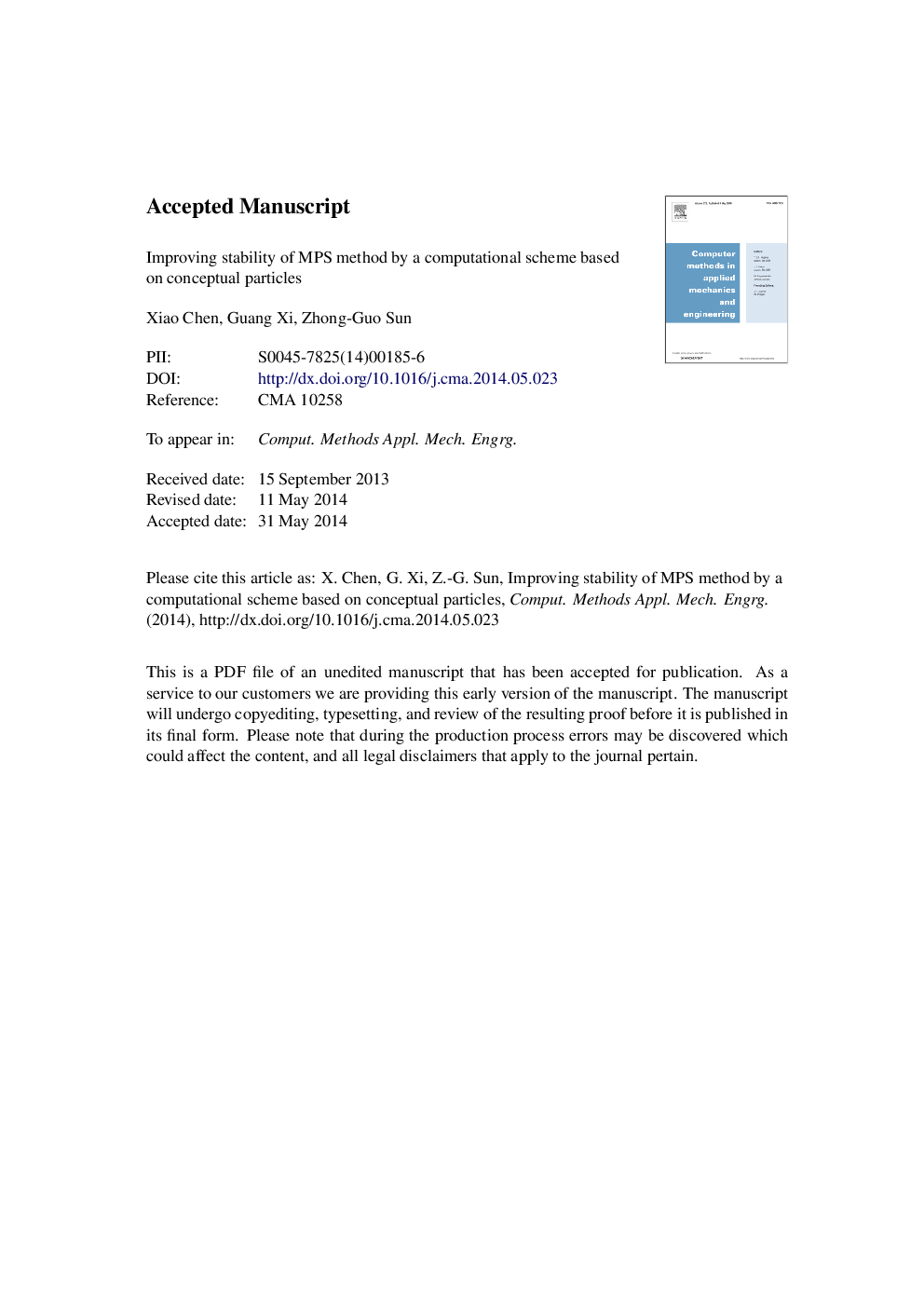| Article ID | Journal | Published Year | Pages | File Type |
|---|---|---|---|---|
| 6917570 | Computer Methods in Applied Mechanics and Engineering | 2014 | 35 Pages |
Abstract
Excessive pressure oscillation and particle clustering are two obstacles that limit the computational stability of the moving particle semi-implicit (MPS) method. Specifically, particles on free surfaces are assumed to have zero pressure and not involved in the solution of the pressure Poisson equation. The zero pressure tends to drive these surface particles to form clusters. The inaccurate distance assessment between these clustered particles would result in incorrect particle number density and an ill pressure Poisson equation, leading to an unstable computation. In this paper, a computational scheme based on conceptual particles is proposed to replace the widely adopted surface detection techniques in the enforcement of the Dirichlet boundary condition. Unlike traditional ghost particles, conceptual particles are the only concept which is introduced to complement the calculation of the particle number density. This leads to a new discretization of the pressure Poisson equation and a new framework of the MPS method (NSD-MPS), which requires no information about the positions of the conceptual particles. The effectiveness of the NSD-MPS method is demonstrated by three verification examples. The demonstrated advantages include: (1) pressure oscillation suppressed in both spatial and time domains, (2) uniform pressure distribution on free surfaces, and (3) minimized clustering of surface particles.
Related Topics
Physical Sciences and Engineering
Computer Science
Computer Science Applications
Authors
Xiao Chen, Guang Xi, Zhong-Guo Sun,
